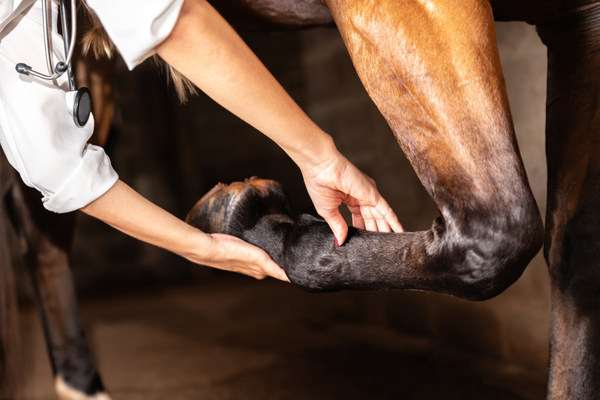Injury Rehab in Horses: Pros, Cons, and Future of Adipose-Derived Stem Cells
August 9, 2023
By Kentucky Equine Research Staff
Injury Rehab in Horses: Pros, Cons, and Future of Adipose-Derived Stem Cells
Equine musculoskeletal injuries such as those involving tendons, ligaments, and joints can be treated with stem cells to amplify the benefits of traditional therapies and rehabilitation programs. Adipose (fat) tissue is one of the most common sources of stem cells. While adipose-derived stem cells have many positive features, using these cells doesn’t guarantee success. This article summarizes the research of Petrova and Vachkova, describing benefits and shortcomings associated with adipose-derived stem cells and providing a look at stem cell-less (cell-free) techniques.*
Pros of Adipose-Derived Stem Cells
Horses have an abundance of subcutaneous adipose tissue that is more easily and economically harvested than bone marrow. Further, fewer complications are associated with collecting adipose tissue.
“A high volume of stem cells can be isolated from adipose tissue, more than bone marrow, according to the researchers,” explained Kathleen Crandell, Ph.D., a nutritionist for Kentucky Equine Research.
Specifically, the number of stem cells in one gram of adipose tissue is 500 times higher than what can be isolated from one gram of bone marrow.
Cons of Adipose-Derived Stem Cells
The degree of “stemness” that adipose-derived stem cells possess remains unclear;
- Culture and processing technique are not optimized;
- Dose and treatment protocols for stem cell therapies are not standardized;
- Some stem cells can be recognized as “non-self,” thereby inducing an immune reaction and rejection; and
- Donor characteristics may influence the overall quality and efficacy of therapy.
Future Directions: Cell-Less Therapy
“Stem cells have paracrine effects, which means they secrete molecules that affect other cells. Such molecules include cytokines (immune-modulating proteins), growth factors, and an array of bioactive molecules that repair damaged tissue.
In addition, stem cells produce small, extracellular vesicles rich in proteins, genetic material and messengers (mRNA, mIRNA), and other substances yet to be identified. These exosomes have functions that are comparable to stem cells, which creates the possibility of simply using the extracellular vesicles rather than the entire stem cell.
Conclusion
Adipose-derived stem cells have desirable features, though limitations in their use persist. Additional research is needed to better understand stem cells isolated from adipose tissue, and the clinical utility of cell-less therapies should be explored further.
As stem cell therapies are advocated for amplifying the effects of traditional therapies, supportive therapies for musculoskeletal injuries should remain an important part of a multimodal treatment protocol. Supplements containing glucosamine, chondroitin sulfate, and MSM support the musculoskeletal tissues, especially joints structures.
“Joint supplements such as Synovate HA support joint health by maintaining joint integrity, reducing cartilage damage, and stimulating cartilage repair. Synovate HA is recommended for slowing progression of arthritis and promotes more comfortable joints,” Crandell said.
*Petrova, V., and E. Vachkova. 2023. Outlook of adipose-derived stem cells: Challenges to their clinical application in horses. Veterinary Science 10(5):348.











